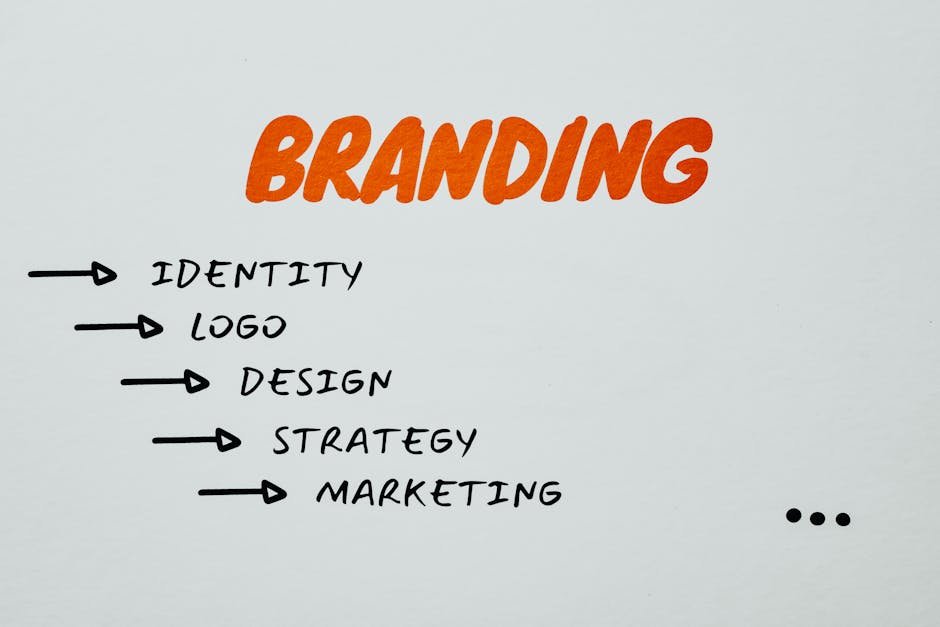12 Secrets to Gauging Social Media Campaign Success
12 Secrets to Gauging Social Media Campaign Success
You’ve heard the theory that social media success is all about engagement and reach, but there’s so much more to it.
In this article, we’ll reveal 12 secrets to effectively gauging the success of your social media campaigns.
From setting clear objectives to analysing competitor benchmarking, you’ll gain a comprehensive understanding of how to measure and maximise the impact of your social media efforts.
Key Takeaways
- Establish clear objectives that aline with overall business goals and make them specific, measurable, achievable, relevant, and time-bound (SMART).
- Select KPIs that directly aline with social media campaign objectives and ensure they are relevant, specific, and measurable.
- Track engagement metrics such as click-through rates, follower growth, and interaction frequency to gauge audience engagement and the effectiveness of content and ad targeting.
- Analyse content reach and conversion rates, as well as audience demographics, to tailor content and measure the impact on overall marketing goals.
Setting Clear Objectives

To gauge social media campaign success, you need to establish clear objectives that aline with your overall business goals. Goal setting is crucial in determining what you want to achieve through your social media efforts. Whether it’s increasing brand awareness, driving website traffic, or boosting sales, your objectives should be specific, measurable, achievable, relevant, and time-bound (SMART).
By setting these clear objectives, you provide a framework for measuring success. Objective alinement ensures that your social media activities are directly contributing to the broader goals of your business. Tracking success against these objectives enables you to see the impact of your campaigns and make informed decisions about future strategies. It also allows you to adjust your approach if you’re not meeting your targets.
Defining key performance indicators (KPIs) is the next step in this process, as they provide the specific metrics you’ll use to measure progress and determine the effectiveness of your social media campaigns.
Defining Key Performance Indicators

When defining key performance indicators, focus on selecting metrics that directly aline with your social media campaign objectives. Performance measurement is essential for evaluating the success of your social media efforts.
Here are a few key points to consider when defining key performance indicators:
-
Relevance: Ensure that the metrics you choose are relevant to your specific social media campaign objectives. For instance, if your goal is to increase brand awareness, metrics such as reach, impressions, and social shares may be more relevant than sales or lead generation.
-
Specificity: Select KPIs that provide specific and measurable data. For example, instead of just monitoring overall website traffic, you may want to track the percentage of website traffic that originates from social media channels.
-
Actionability: Choose metrics that provide insights you can act on. Metrics like engagement rate, click-through rate, and conversion rate can help you understand how your audience is interacting with your content and where adjustments may be needed.
Tracking Engagement Metrics

Now let’s talk about the specific engagement metrics you should be keeping an eye on.
Click-through rates, follower growth, and interaction frequency are key indicators of how well your social media campaign is resonating with your audience.
These metrics can give you valuable insights into the level of engagement and interaction your content is generating, helping you understand the impact of your efforts.
Click-Through Rates
You can track the success of your social media campaign by monitoring click-through rates, which measure the engagement level of your audience. Understanding how many people are clicking on your ad can provide valuable insights into the effectiveness of your content and ad targeting. Here’s how click-through rates can help you gauge your social media campaign’s success:
-
Conversion OptimisationAnalysing click-through rates helps you identify which content drives the most conversions, allowing you to optimise your campaigns for better results.
-
Ad TargetingBy monitoring click-through rates, you can assess the effectiveness of your ad targeting strategies and make adjustments to reach your desired audience more effectively.
-
Engagement MeasurementClick-through rates serve as a key indicator of audience engagement, helping you evaluate the impact of your social media content.
Follower Growth
Tracking follower growth is crucial for evaluating the effectiveness of your social media campaign’s engagement metrics. By monitoring the increase in your follower count, you can gauge the impact of your engagement strategies, audience targeting, content optimisation, and influencer collaboration.
A steady rise in followers indicates that your content is resonating with your audience and that your strategies are effective. On the other hand, a stagnant or declining follower count may signal the need to reassess your approach.
Analysing follower growth alongside other engagement metrics provides valuable insights into the overall performance of your social media campaign. It allows you to make informed decisions about refining your content, targeting the right audience, and collaborating with influencers to maximise your campaign’s impact.
Interaction Frequency
By quantifying the frequency of interactions, you can gain valuable insights into the effectiveness of your social media engagement strategies and further assess the impact of your campaign. When it comes to interaction analysis and engagement tracking, keep in mind the following:
- Measure the number of likes, comments, shares, and direct messages to understand how your audience is engaging with your content.
- Look for patterns in the times and days when interactions are highest to optimise your posting schedule.
- Analyse the type of content that generates the most engagement and tailor your future posts accordingly.
Understanding these metrics will help you refine your approach and create more compelling content that resonates with your audience. This, in turn, will contribute to the success of your social media campaign.
Now, let’s transition into the subsequent section about ‘monitoring follower growth’.
Monitoring Follower Growth

To truly understand the impact of your social media campaign, it’s essential to keep an eye on both the rate and the quality of your follower growth. Monitoring follower growth allows you to gauge the effectiveness of your content and engagement strategies. Follower engagement and audience growth are key indicators of how well your social media campaign is resonating with your target audience.
When monitoring follower growth, it’s important to look beyond just the numbers. While a rapid increase in followers may seem positive, it’s crucial to assess the quality of these followers. Are they actively engaging with your content, sharing your posts, and participating in discussions? These are the types of followers that contribute to a successful social media campaign.
Additionally, tracking follower growth over time provides valuable insights into the impact of specific content or marketing initiatives. By identifying spikes or dips in follower growth, you can pinpoint which strategies are resonating with your audience and which may need adjustment.
Ultimately, monitoring follower growth allows you to adapt and refine your social media campaign to better connect with your audience and achieve your marketing goals.
Analysing Content Reach

Assessing the effectiveness of social media content involves analysing its reach and engagement with the audience. This analysis provides valuable insights into the impact of marketing initiatives.
When analysing content reach, several factors should be considered. First, content engagement should be examined, including the number of likes, comments, shares, and retweets received. This data provides a clear indication of how well the content resonates with the audience.
Second, audience demographics should be explored by utilising insights provided by social media platforms. This allows for a better understanding of the demographics of the people engaging with the content, such as age, gender, location, and interests. Understanding audience demographics helps tailor the content to better suit their preferences.
Lastly, reach metrics should be tracked. This includes monitoring the number of people who have seen the content and the frequency of its appearance in their feeds. This data helps gauge the overall impact of the content and its ability to reach a wider audience.
Analysing content reach allows for informed decisions about the type of content to create and share, ensuring that it alines with the audience’s interests and preferences.
Now, let’s delve into the crucial aspect of assessing conversion rates.
Assessing Conversion Rates

To gauge the success of your social media campaign, it’s essential to analyse your audience’s conversion rates and their impact on your overall marketing goals. Conversion optimisation is crucial in ensuring that your social media efforts are translating into tangible business results. By assessing conversion rates, you can determine the effectiveness of your campaign in driving actions such as purchases, sign-ups, or other desired outcomes.
Understanding the customer journey tracking is vital in identifying the touchpoints where potential customers interact with your brand on social media and eventually convert. This involves monitoring their behaviour from initial engagement to the final conversion, allowing you to optimise each stage of the process for better results.
By delving into the specifics of conversion rates, you can gain valuable insights into the effectiveness of your social media efforts in driving meaningful actions from your audience. This understanding is pivotal in refining your strategies and ensuring that your social media campaigns aline with your broader marketing objectives.
Customer journey tracking provides a comprehensive view of how your audience interacts with your brand, enabling you to make informed decisions to enhance your social media campaign’s performance.
Calculating Customer Acquisition Cost

You need to understand the cost per customer and the importance of acquisition cost analysis.
By calculating ROI accurately, you can effectively measure your social media campaign success.
Understanding these points will help you make informed decisions and optimise your marketing strategies.
Cost per Customer
Calculating the customer acquisition cost involves analysing the total expenses incurred to acquire a customer through your social media campaign. To understand the cost per customer, you need to consider:
-
Customer Retention: Evaluate how well your marketing strategy is retaining customers acquired through social media. This includes assessing the lifetime value of customers gained through social media efforts.
-
Marketing Strategy: Review the effectiveness of your marketing strategy in converting social media leads into paying customers. Assess the cost-effectiveness of different marketing tactics.
-
Attribution Models: Utilise attribution models to determine how much of the customer acquisition cost can be attributed to social media efforts. This helps in understanding the direct impact of social media on customer acquisition.
Understanding the cost per customer is crucial for optimising your social media campaign’s efficiency.
Next, let’s delve into the subsequent section about ‘acquisition cost analysis’.
Acquisition Cost Analysis
When analysing your social media campaign’s success, it’s essential to delve into the acquisition cost analysis, specifically calculating the customer acquisition cost. Understanding the cost efficiency of acquiring customers through social media channels is crucial for your business.
To calculate the customer acquisition cost, divide the total costs associated with acquiring customers (such as marketing and advertising expenses) by the number of customers gained during the campaign period. This provides a clear insight into the effectiveness and efficiency of your social media campaign in acquiring new customers.
Calculating ROI Accurately
To accurately calculate the return on investment (ROI) for your social media campaign, it’s crucial to calculate the customer acquisition cost and compare it to the lifetime value of a customer gained during the campaign period.
Here’s how you can accurately calculate your ROI:
-
Determine Customer Acquisition Cost (CAC)
-
Calculate total costs of campaign (ad spend, content creation, etc.).
-
Divide total costs by the number of customers acquired from the campaign.
-
Compare CAC to Lifetime Value (LTV)
-
Calculate the average revenue a customer brings over their lifetime.
-
Compare the CAC to the LTV to assess the campaign effectiveness.
-
Utilise Social Media Metrics
-
Measure conversion rates, click-through rates, and engagement to gauge success.
Measuring Customer Lifetime Value

By understanding the value that each customer brings to your business over their lifetime, you can make more informed decisions about your social media campaign’s impact. Customer retention and loyalty programmes are essential for maximising the lifetime value of your customers. Lifetime value analysis and customer segmentation are crucial tools for measuring the effectiveness of your social media campaigns. To help you better grasp the significance of measuring customer lifetime value, consider the following table:
| Customer Segment | Average Purchase Frequency | Average Purchase Amount |
|---|---|---|
| High Value | 6 times a year | $200 |
| Medium Value | 4 times a year | $150 |
| Low Value | 2 times a year | $100 |
Evaluating Return on Ad Spend

To measure the success of your social media campaign, start by evaluating the return on your ad spend. Understanding the effectiveness of your ad spend is crucial for optimising your social media campaigns. Here’s a simple process to evaluate your return on ad spend:
-
Set Clear Goals: Clearly define the objectives of your social media campaign. Whether it’s increasing website traffic, generating leads, or driving sales, having clear goals will help you measure the effectiveness of your ad spend.
-
Track Conversions: Utilise tracking tools to monitor the conversions generated from your social media ads. This will help you understand the direct impact of your ad spend on desired actions such as purchases, sign-ups, or downloads.
-
Conduct Ad Spend Analysis: Compare the cost of your ads with the revenue they generate. Calculate the return on ad spend (ROAS) by dividing the revenue generated from the ads by the cost of the ads. This will provide a clear picture of the effectiveness of your ad spend in relation to the campaign goals.
Measuring campaign effectiveness through ad spend analysis allows you to make data-driven decisions and optimise your social media strategies for better results.
Monitoring Brand Sentiment

Evaluate your brand sentiment by monitoring social media conversations, ensuring a comprehensive understanding of customer perceptions and attitudes. Monitoring brand sentiment through sentiment analysis allows you to gauge the overall attitude towards your brand image. By tracking mentions, comments, and reviews, you can gain valuable insights into how your audience perceives your brand. Utilise sentiment analysis tools to categorise conversations as positive, negative, or neutral, providing a clear overview of customer sentiment across various social media platforms.
| Sentiment | Mentions | Percentage |
|---|---|---|
| Positive | 5000 | 65% |
| Negative | 1500 | 20% |
| Neutral | 1000 | 15% |
Understanding the distribution of sentiment helps in identifying areas for improvement and capitalising on positive feedback. Additionally, it allows you to address any negative sentiment promptly, mitigating potential damage to your brand image. By consistently monitoring brand sentiment, you can adapt your strategies to aline with customer perceptions, ultimately fostering a positive brand image and enhancing customer satisfaction.
Moving forward, let’s delve into the importance of analysing competitor benchmarking to further enhance your social media campaign strategies.
Analysing Competitor Benchmarking

When analysing competitor benchmarking, you can gain valuable insights into your industry landscape.
By comparing your performance to that of your competitors, you can identify trends and best practises.
This allows you to set realistic performance standards and identify areas for improvement.
Competitor Performance Comparison
You frequently compare your social media campaign performance to that of your competitors to gain insights and identify opportunities for improvement. When analysing competitor benchmarking, consider these key points:
-
Benchmarking strategies: Evaluate your competitors’ social media strategies, including content types, posting frequency, engagement tactics, and audience targeting. Identify areas where your competitors excel and areas where they may be falling short.
-
Competitor analysis: Dive deep into your competitors’ social media metrics, such as follower growth, engagement rates, and website traffic driven from social platforms. Understanding their performance can help you set realistic goals and benchmarks for your own campaigns.
-
Identify trends: Look for trends in your competitors’ social media performance over time. By identifying patterns, you can gain valuable insights into what resonates with your target audience and adjust your strategies accordingly.
Identifying Industry Trends
To identify industry trends through competitor benchmarking, start by analysing consumer behaviour on social media to identify market trends within your industry. Look for common themes and topics that are generating engagement and interest amongst your competitors’ audiences. Pay attention to the types of content, posting frequency, and engagement levels to gain an understanding of what’s resonating with consumers.
By delving into their social media metrics, you can uncover patterns and insights that can inform your own campaign strategies. Comparing these trends with your own social media performance will help you identify opportunities for improvement and innovation.
Understanding industry trends through competitor benchmarking can help you stay ahead of the curve and refine your social media campaign strategies. This insight will enable you to set more informed performance standards and refine your approach for greater success.
Setting Performance Standards
Analysing your competitors’ benchmarking data provides valuable insights for setting performance standards in your social media campaign. To effectively utilise this data, consider the following:
- Performance benchmarks: Identify key performance indicators (KPIs) used by your competitors to measure success.
- Goal alinement: Ensure that your performance standards are alined with your campaign objectives and industry standards.
- Metric interpretation: Analyse how your competitors interpret and use metrics to gauge their social media campaign success.
- Data visualisation: Explore how your competitors visualise and present their social media campaign data for analysis.
Understanding how your competitors set their performance standards can help you refine and enhance your own social media campaign strategies. This knowledge will also be beneficial when utilising analytics tools to track and measure your campaign’s performance.
Utilising Analytics Tools

When evaluating the success of your social media campaigns, it’s crucial to utilise analytics tools to gain valuable insights into the performance of your content and audience engagement. Data interpretation plays a crucial role in understanding the impact of your social media efforts.
Analytics tools provide you with essential data points such as reach, engagement, and click-through rates, enabling you to assess the effectiveness of your campaigns. By interpreting this data, you can identify what content resonates most with your audience and adjust your strategy accordingly.
Campaign optimisation is another key benefit of utilising analytics tools. These tools allow you to track the performance of different elements within your campaigns, such as ad creatives, messaging, and posting times. By analysing this data, you can make informed decisions about what aspects of your campaigns need improvement.
For example, if you notice that a particular type of content consistently receives high engagement, you can allocate more resources to creating similar content in the future. Conversely, if certain posts are underperforming, you can adjust your approach to improve results.
Ultimately, analytics tools empower you to refine and enhance your social media campaigns for better overall performance.
Frequently Asked Questions
How Can We Effectively Integrate Our Social Media Campaign With Our Overall Marketing Strategy?
To effectively integrate your social media campaign with your overall marketing strategy, start by alining your marketing channels. By coordinating content and messaging across platforms, you can ensure a cohesive and impactful approach to reaching your audience.
What Are Some Common Mistakes to Avoid When Tracking Engagement Metrics on Social Media?
When tracking engagement metrics on social media, common mistakes to avoid include inaccurately tracking data and misinterpreting the results. Ensure accuracy in tracking and interpret the data correctly to effectively gauge your social media campaign’s success.
How Can We Effectively Measure the Impact of Our Social Media Campaign on Brand Sentiment?
To measure the impact of your social media campaign on brand sentiment, you can use sentiment analysis and social listening tools to gauge audience sentiment. These methods help you understand how your brand is perceived.
What Are Some Innovative Ways to Analyse Competitor Benchmarking in the Social Media Landscape?
You can gain valuable insights by conducting competitor analysis in the social media landscape. By tracking their engagement, content strategy, and audience demographics, you can identify opportunities and refine your own social media campaign for success.
How Can We Use Analytics Tools to Identify and Target Our Most Valuable Customer Segments on Social Media?
To target valuable customer segments on social media, use advanced analytics tools. Analyse data to understand audience preferences, behaviours, and demographics. Tailor your content and ads to specific segments, maximising engagement and conversion rates.
Conclusion
You’ve learnt 12 secrets to gauge your social media campaign success.
Did you know that 73% of marketers believe that social media marketing has been ‘somewhat effective’ or ‘very effective’ for their business?
By utilising the strategies outlined, you can ensure that your social media campaigns aren’t only effective but also driving real results for your business.
Keep monitoring and analysing to make the most of your social media efforts.
Contact us to discuss our services now!
